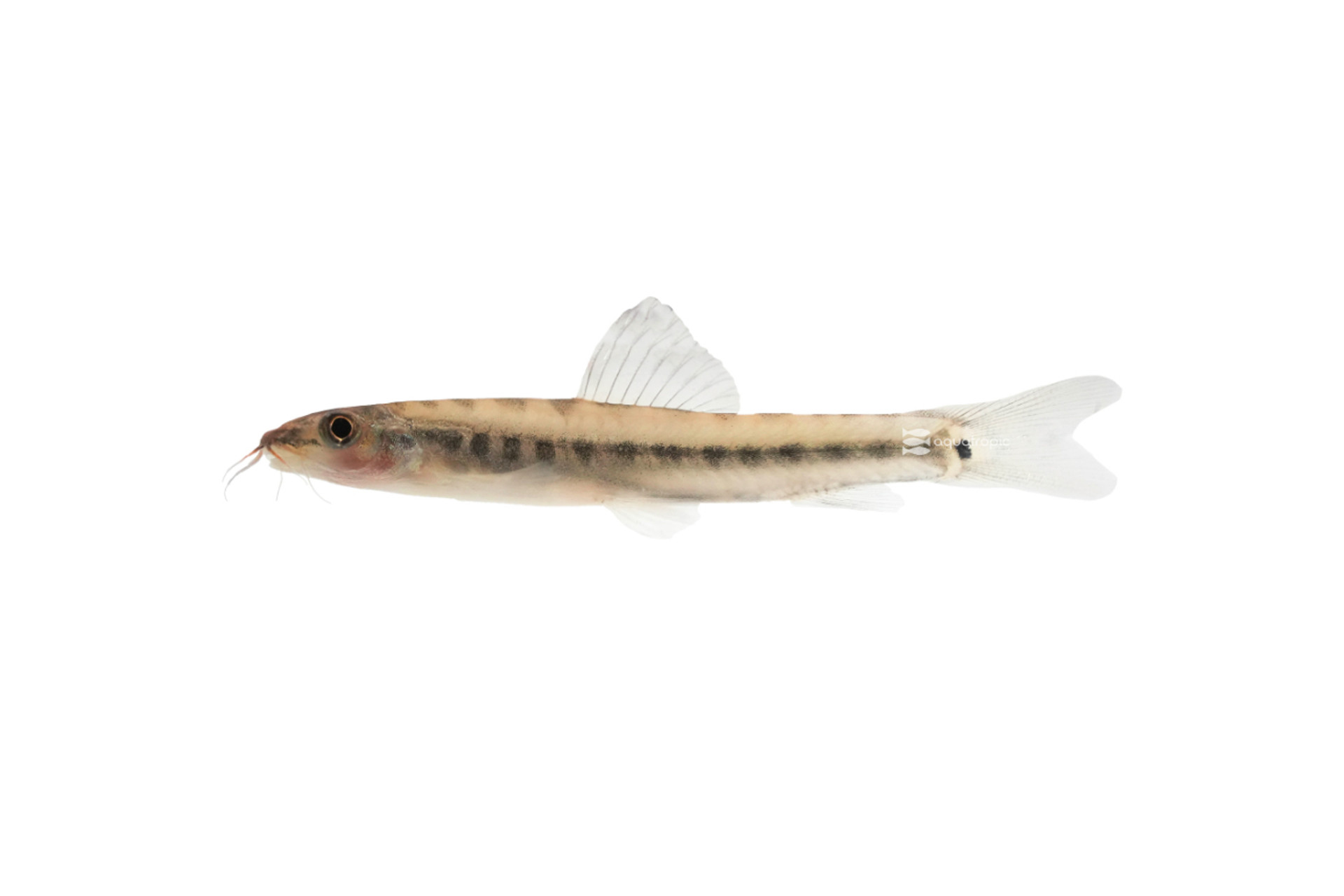The Lovely Little Ornate Loach

The Ornate Sand Loach comes from only one place: the Tubi River drainage in Thailand. As such, it is not much of a surprise that it has very few common names. The Mandarin Chinese name roughly translates as “Loach with Decorative Stripes,” which, we think, might be a bit boring, but pretty accurate. When Google translated from Czech, Mřenka ozdobná is slightly less accurate, but perhaps a more humorous “Decorative Mink.” Estonians call it a Beautiful Stone Trolling. We don't really understand this one but think it could be a good band name.
Its scientific nomenclature is Nemacheilus ornatus. The first portion of this relates to their barbels, because Nemacheilus could be interpreted as “hairy lip”. The second portion of this just means ornate, or delicately decorated. They are very beautiful, with nearly clear fins and 10-12 dark vertical diamonds along their sides. When mature, a slightly iridescent line runs along their back on both sides of a darker stripe. These are small fish, never getting bigger than an inch and a half or so.
The rivers they come from are clear, clean and free flowing; as a result, they have high oxygen levels and low nutrient levels. The aquarium environments we make should emulate these conditions as closely as possible. Current, cleanliness and oxygenation should be at the forefront of the design you come up with. We suggest have tanks that are long and shallow, but they needn't be overly large. A 20-gallon aquarium would be adequate for a group of four or five as long as the tank was long instead of tall. Filters should also be over-sized, and your filter system should be capable of turning over the entire volume of the display a minimum of five times per hour and ten would be better. Consider using some gentle powerheads or forcing some air into the tank with air pumps and stones as well.
Nemacheilus ornatus will thrive if given very clean water, another reason to utilize large filters. Shoot for nitrates under five ppm. This goal will likely require you to do fairly large, regular water changes; our suggestion is for 20% weekly, though this will depend on your stocking load and filtration capacity. These fish are not overly sensitive to water hardness or pH, as long as neither is extreme in any way, and isn't subject to large fluctuations. A pH between 6.5 and 7.5 and hardness between 20 and 150 will both fine. Water temperature should be between 72 and 78; the lower range of these temperatures will aid in maintaining higher oxygen levels.
Displays can be brightly lit and the fish themselves are no risk to your plants, though there aren't many plants that are suitable for this type of current, substrate and nutrient levels. Decor should consist of a smooth rounded substrate, and driftwood / rocks without sharp edges, think of a small creek that has smoothed and rounded all the edges in it for a thousand years. A soft sand substrate that was heavy enough not to be disturbed by the current would also be fine, though some reports state that these fish will only spawn on pebbles and small rocks.
These fish are not available as commercially aquacultured specimens, though they have been successfully spawned in home aquariums. There is a good opportunity here for the home aquarist do break new ground! Females will be substantially larger than the males in girth and length. Triggers for spawning activity aren't well known for this species, but there is at least one record of an aquarist using larger water changes of very soft, and slightly cooler water to mimic a rainy season with some success. It's reasonable to assume that the eggs and the fry will need some area protected from the current in order to hatch and thrive.
If you aren't interested in trying to breed Nemacheilus ornatus, they are still excellent, peaceful tank mates for other fish that like the same kind of conditions. They do best in groups, and we suggest keeping a minimum of five of them. Good options for other fish are things like small Garras, White Clouds, Borneo Suckers / Hillstream Loaches, peaceful Barbs, Danios, and Rasboras.
Ornate Loaches are very easy to feed, and will usually accept a quality sinking pellet, like Nutramar's Freshwater Complete in an appropriate size for their mouths. They will also relish small, thawed foods like mysis, artemia / brine, daphnia, tubifex and bloodworms. These foods could also be fed live, for those of you with access. Feed small amounts at a time to ensure that the food doesn't get washed past them in the current.
Loaches of all types are staff favorites here for their high activity levels, beautiful appearance and interesting behaviors. Ornate Loaches are all of this, but also bring a rarity aspect to the display for those of you interested in fish that your friends don't have. These are very hardy fish as long as you give them the flow and clean water they love. If this sounds like just the fish for you, head to your LFS and ask the for some sustainably collected Nemacheilus ornatus from Aquatropic today!